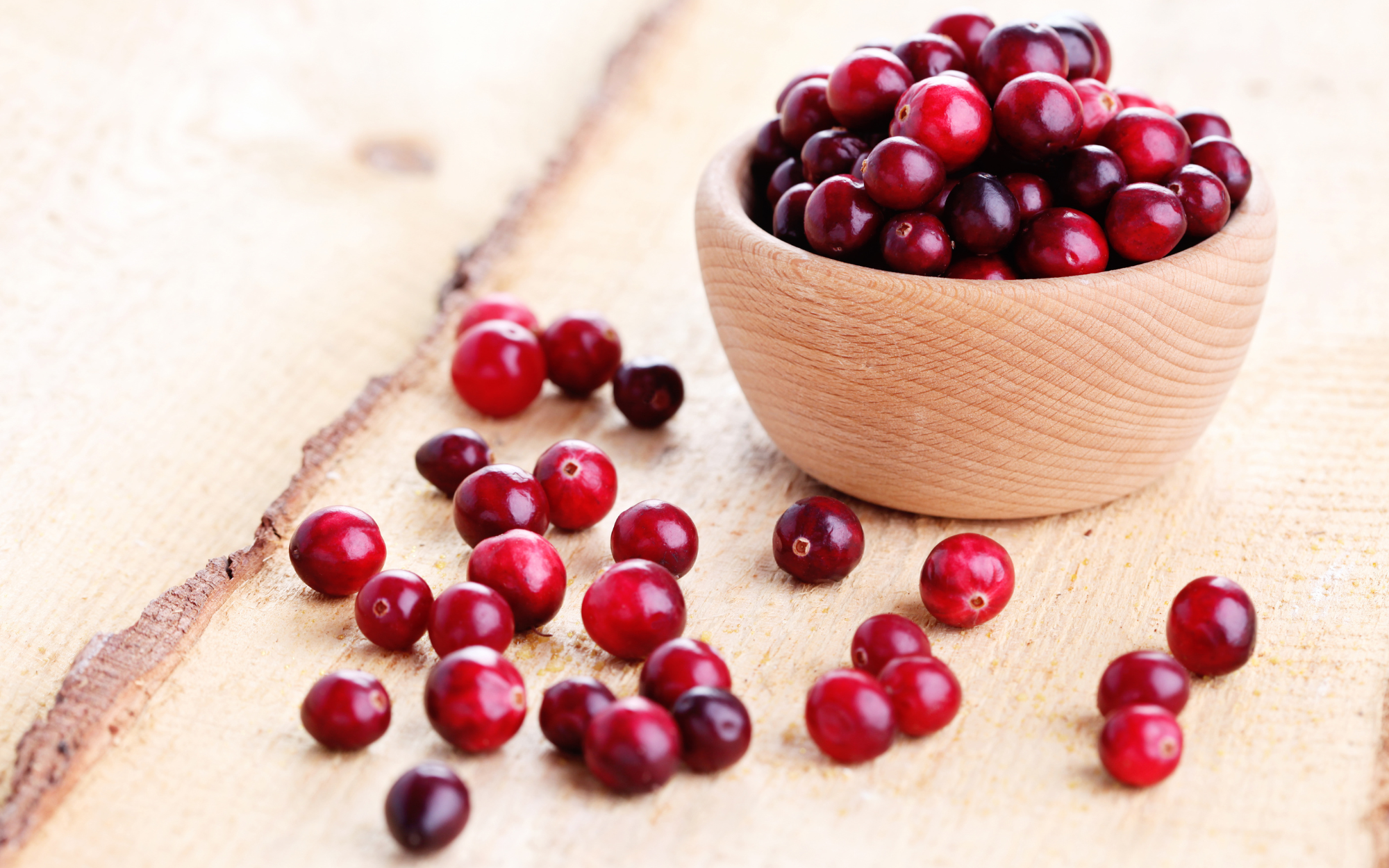The different types of cranberry measurements and why they matter for UTI supplements

Ever tried drinking a gallon of cranberry juice to cure your UTI? Spoiler alert: that’s not how it works. But the good news is, cranberry extracts with concentration of PACs can prevent UTIs long-term. It all depends on how they’re measured.
How do cranberries prevent UTIs?
On top of their delicious taste, cranberries are full of all-natural health benefits for your body (just like most plants). One of these benefits is an active molecule called proanthocyanidins — also known as PACs.
These molecules have powerful anti-adhesion properties, which means they’re amazing at stopping bad bacteria from sticking to your urinary tract and causing infection. But simply eating a handful of cranberries won’t give you enough PACs to stop an infection. It needs to be carefully extracted, measured, and formulated into a supplement.
What makes a cranberry supplement effective?
Current research has proven that cranberry supplements are only effective at preventing recurrent UTIs if they (Jepson et al., 2012):
- Contain a minimum of 36 mg of soluble PACs per day
- Contain PACs that use the standardized and validated measures of DMAC/A2
If that second point sounded like gibberish, don’t worry. We’ll explain everything. But first, it’s important to know that many cranberry supplements on the market today contain far less than 36 mg of PACs per dose (Chughtai et al., 2016; Jepson et al., 2012). We’re talking less than 5mg (Chughtai et al., 2016; Jepson et al., 2012). That’s why doing your research is crucial for choosing a supplement that will actually work.
What is the most effective method for measuring cranberry PACs?
There are several methods used around the world, all of which yield different results varying from 1 to 5-fold. For that reason, comparing PACs amounts that use different testing methods can be confusing.
Luckily, there’s a new testing method that has more consistent results for soluble and insoluble PACs found in cranberry juice, powder, and whole fruit powders. This method is called the 4-(dimethylamino)cinnamaldehyde (DMAC) assay. Go ahead — say that five times fast.
Breaking down the DMAC method.DMAC is a universally recognized lab technique used to measure the total level of soluble PACs in cranberry products. It can be used by any lab worldwide. And it’s pretty awesome.
Here’s how it works. To determine an unknown quantity of PACs, the DMAC method will compare it to a known reference standard quantity of PACs. The result: a reliable measure of how many PACs are in a product.
There are 2 types of DMAC reference standards used to measure PACs: DMAC/A2 and DMAC/c-PAC.
(We know, we know. There are a lot of acronyms going on right now. Stick with us.)
DMAC/A2 is a commercially available standard. It measures something called A-type linkages, which are a big part of why PACs are so great at stopping bacteria from sticking. That's why most of the clinical research is done with PACs measured by this standard.
On the other hand, DMAC/c-PAC is a proprietary reference standard. And in addition to measuring A-type linkages, it also measures B-type linkages, which are reported to be less effective at preventing bacterial adhesion (Feliciano et al., 2014). So far there have not been any reported clinical studies to show effectiveness with these standard of PACs
What preferred method should I look for when choosing a cranberry supplement?
The short answer: DMAC/A2.
Since the majority of clinical trials conducted were completed with products that provide 36 mg PACs measured by the DMAC/A2 method.
Both references are developed by scientists and provide accurate quantification of soluble cranberry PACs. At the end of the day, it does not matter how a product is tested as long as the method is by DMAC/A2 or DMAC/c-PAC.
Although A2 and c-PAC are both DMAC methods, they can yield different results. That’s because in the A2 method, a single compound is used as the standard.
Meanwhile, in the c-PAC method, several compounds and other variables are taken into consideration. This usually provides a PACs value that is 3.5 times greater than the A2 method.
While you're looking for a supplement’s measurement method, remember that not all labeling is accurate. Some labels might tell you the PACs quantity using the DMAC method, without telling you what type of reference standard was used. This can be confusing.. When in doubt, reach out to the brand and ask them directly. (Little do they know you’re a PACs measurement pro now.)
What is the best cranberry supplement for UTI prevention?
Easy: the one that has 36 mg of PACs per dose, measured using DMAC/A2. But we just call it Utiva Cranberry PACs.

How does Utiva stack up to other cranberry supplements? In an assessment conducted by Complete Phytochemical Solutions, LLC, Utiva was compared to 4 of the most popular cranberry supplements on the market to see which had the highest amount of soluble PACs.
Each was measured using DMAC and the two reference standards: DMAC/A2 and DMAC/c-PAC. Here were the results:
|
Brand |
DMAC/A2 Method for PACs per Capsule |
DMAC/c-PAC Method for PACs per Capsule |
|
Utiva Cranberry PACs |
39.56 |
134.59 |
|
Cranberry Product #1 |
2.746 |
9.177 |
|
Cranberry Product #2 |
5.126 |
18.315 |
|
Cranberry Product #3 |
4.989 |
17.82 |
|
Cranberry Product #4 |
1.076 |
4.061 |
(Psst. Think of DMAC/A2 and DMAC/c-PAC as different conversion units, like how 1 kilogram is equal to 2.2 pounds. In other words, 39.56mg A2 is the same as 134.59mg c-PAC.)
The results are clear: Utiva meets the recommended minimum 36 mg dosage of PACs per capsule — far exceeding the other supplements. This makes Utiva the only supplement on the chart that can help in preventing urinary tract infections.
Want to skip the supplement search and prevent painful, recurrent UTIs? Learn more about Utiva Cranberry PACs here and call our customer service line anytime if you have questions: 1-888-622-3613.
References
Chughtai, B., Thomas, D., & Howell, A. (2016). Variability of commercial cranberry dietary supplements for the prevention of uropathogenic bacterial adhesion. American journal of Obstetrics and Gynecology, 215(1), 122–123. https://doi.org/10.1016/j.ajog.2016.03.046
Feliciano, R. P., Meudt, J. J., Shanmuganayagam, D., Krueger, C. G., & Reed, J. D. (2014). Ratio of "A-type" to "B-type" proanthocyanidin interflavan bonds affects extra-intestinal pathogenic Escherichia coli invasion of gut epithelial cells. Journal of agricultural and food chemistry, 62(18), 3919–3925. https://doi.org/10.1021/jf403839a
Jepson, R. G., Williams, G., & Craig, J. C. (2012). Cranberries for preventing urinary tract infections. The Cochrane Database of Systematic Reviews, 10(10), CD001321. https://doi.org/10.1002/14651858.CD001321.pub5
Knowledge is power
Sign up to our newsletter to keep learning!

- Choosing a selection results in a full page refresh.
- Opens in a new window.


